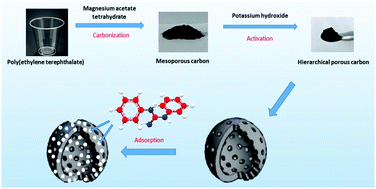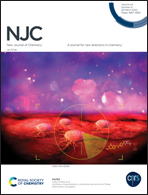Valorization of poly(ethylene)terephthalate wastes into nanoporous carbons for the adsorption of 1,3-diphenylguanidine from an aqueous solution
Abstract
1,3-Diphenylguanidine (DPG) in an aqueous solution can endanger human health and also cause environmental pollution. A series of nanoporous carbons (called NPC-1–4) were prepared using a MgO-template method and KOH activation with an MgO template to absorb 1,3-diphenylguanidine (DPG) in aqueous solution. In addition, the carbon precursor of the template carbon uses poly(ethylene)terephthalate (PET) waste which is difficult to deal with. Meanwhile, commercially available absorbents comprising NCC-9, XCC-4 and macroporous resin (MR) were also studied in this work as controls. All absorbents were characterized by SEM and N2 physical absorption–desorption isotherm analysis. DPG solution onto all absorbents is more inclined to fit PSO by experimental data. Except for NCC-9 and MR, the adsorption isotherms could be correlated to the Freundlich model, and the related parameters of PSO (Ks and Qes) for NPC-4 are higher than other absorbents fitting with Freundlich. NPC-4 was able to be reused for DPG removal for at least five consecutive cycles without any obvious efficiency loss. The results indicated that the self-made nanoporous carbon could be a potential adsorbent for the removal of DPG from aqueous solutions.



 Please wait while we load your content...
Please wait while we load your content...